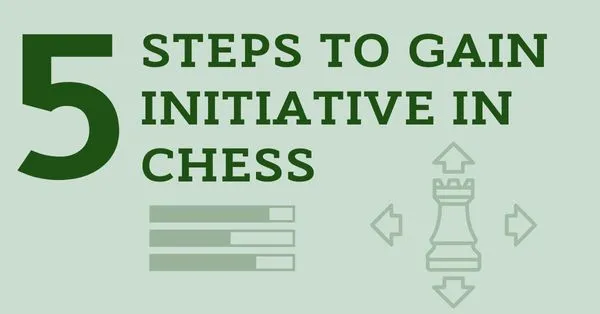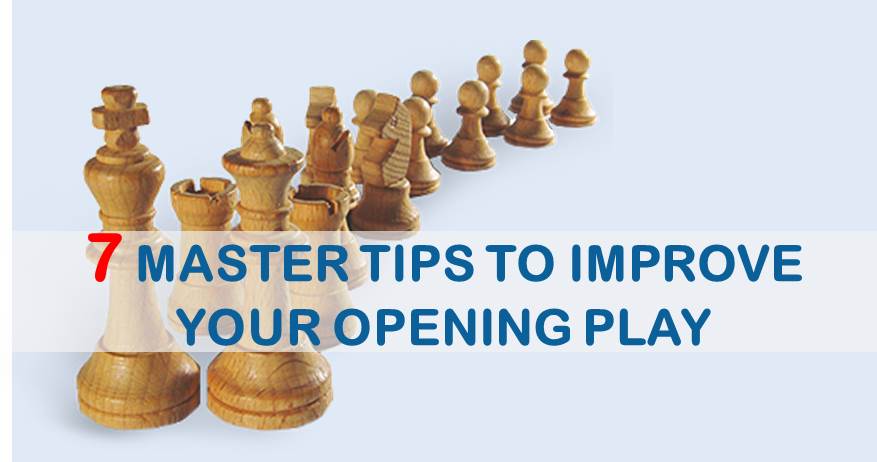5 Ways to Stop Blundering at Chess (once and for all)
We all enjoy a good game of chess and hope to produce games that we can proudly show our friends or students. However, sometimes things just go wrong at some point and it’s probably safe to say that all of us have made, at least once in our life, an inexplicable move that simply turns all the efforts we have put in the game so far into dust.
Anybody can blunder, from club players to strong grandmasters, but here are a few pieces advice to follow in order to prevent this from happening in your future games:
1. Improve your calculation of short variation
This might sound weird, but in fact, most mistakes are made early in the process of calculation (up to the third or fourth move). While a leak in the fifth or sixth move of a variation can most of the times be spotted and corrected, we can’t say the same about one in the first or second move of our calculation. A good idea is working on your ability to correctly identify and select the candidate moves in every position and apply the same process for every move in your calculation.
2. Look for all your opponent’s answers
Missing an opponent’s move is a typical mistake in calculation. How many times didn’t you lose a game simply because you haven’t looked for your rival’s best answer? We have noticed, especially when working with our students, that there is a tendency of looking only at one or two possible answers and, even though in some cases these can indeed be the best, it is not always the case.
In order to fix this error you should apply the same method of candidate moves to find your opponent’s best answer, ensuring this way that your own selected move isn’t a mistake. Be aware of your opponent’s most active move! Most of the times it can be a threat against one of our pieces, a check or capture of any nature (sacrifice included).
Ready to start systematic training that actually works?
Click here to start your training using the day-by-day program.
3. Double check your calculation
Many times, if our opponent plays the moves we have previously calculated, we tend to just go ahead and replay the line we had in mind without taking a moment to check it again.
As the lines we calculated develop on the board, it’s easier to spot a potential mistake if we quickly apply the process of candidate moves instead of just blitzing the moves away.You don’t have to spend a lot of time on this, but a few minutes of double checking could save you from blundering the game away.
4. Don’t hurry
This is probably obvious and we’ve all heard it before. However, there are still those moments when we hurry to make an “obvious” move without checking it too much. And, as if to prove us that Murphy was right, that is the exact moment we hang a piece.
Sometimes, when we have a better or even winning position we tend to relax and stop applying the previously mentioned advices and this is the moment when most of the mistakes occur. Keep your focus always and this way the risk of making a mistake will be seriously diminished!
5. Always look for your opponent’s threat
This is one of the first things we are told when we start playing chess and yet it seems like we never truly learn it. In order to avoid accidents, you should always ask yourself “what does my opponent want with his last move”?
Whether there is a hidden threat or just the start of a plan, it’s always useful to identify his intentions. This way, you know if you are actually looking for a defense or you can just go on with your plans and ideas.
Important tip:
Remember that most blunders happen in good positions! The reason for this is because, with so many good options, we often get excited and think that every move is of equal value to the other. However, most of the times this is not the case. If you see a good continuation, don’t look for anything more! Just double check that line and play it without any hesitation. Very often last minute findings are dreadful mistakes.
A well known technique to employ is the so-called method of comparison that is usually useful when you have two moves of seemingly equal value. Calculate the variations and find the differences between them. This way you will avoid overlooking unexpected responses.
For example, let’s take the position in the diagram below:

After some thought we can see that white is winning. He just needs to find the right continuation. The queen is under attack and it must move so that it keeps the pin on the knight on e5. What is better: Qa1 or Qb2?
Blunders happen to all players at all levels and they will likely continue happening.
Our goal should be to minimize the number of blunders we commit and especially in those positions where we are much better or even winning. We hope that the above given advice will serve you in your future games and hopefully you will achieve this goal. Good luck!
If you want to improve your chess level, you need to have a clear study plan. If you aim for a dramatic improvement at chess you need to work on all of the elements of the game in a systematic way:
- tactics
- positional play
- attacking skills
- endgame technique
- classical games analysis
- psychological preparation
- and much more
That seems to be like a lot of things, and that is. But no worries, we have made it easy for you. Our comprehensive training course covers it all and much more. Sign up for 21 Day Training right now!










Comments: